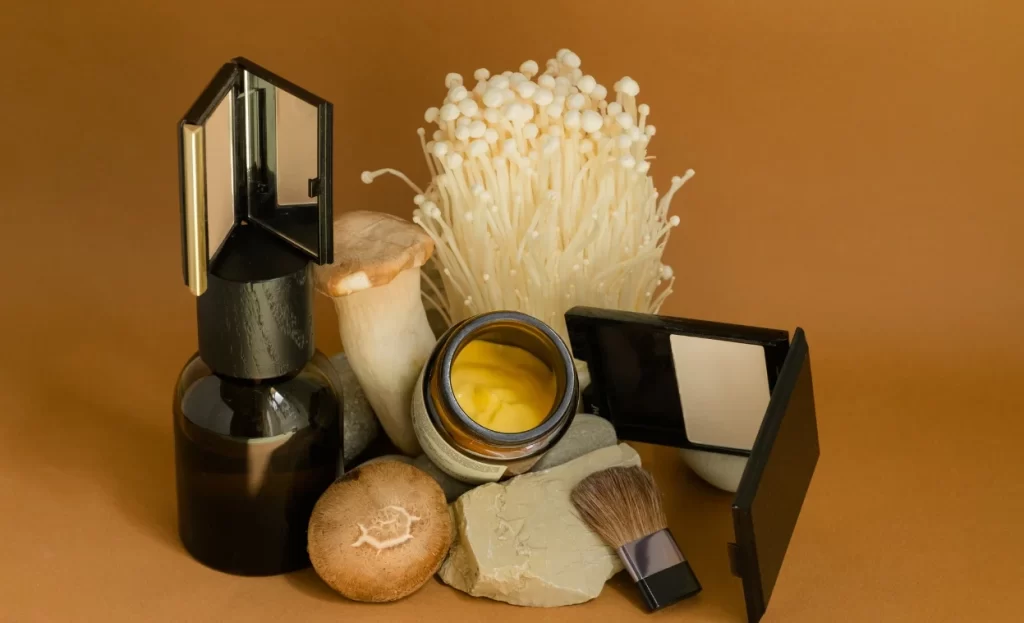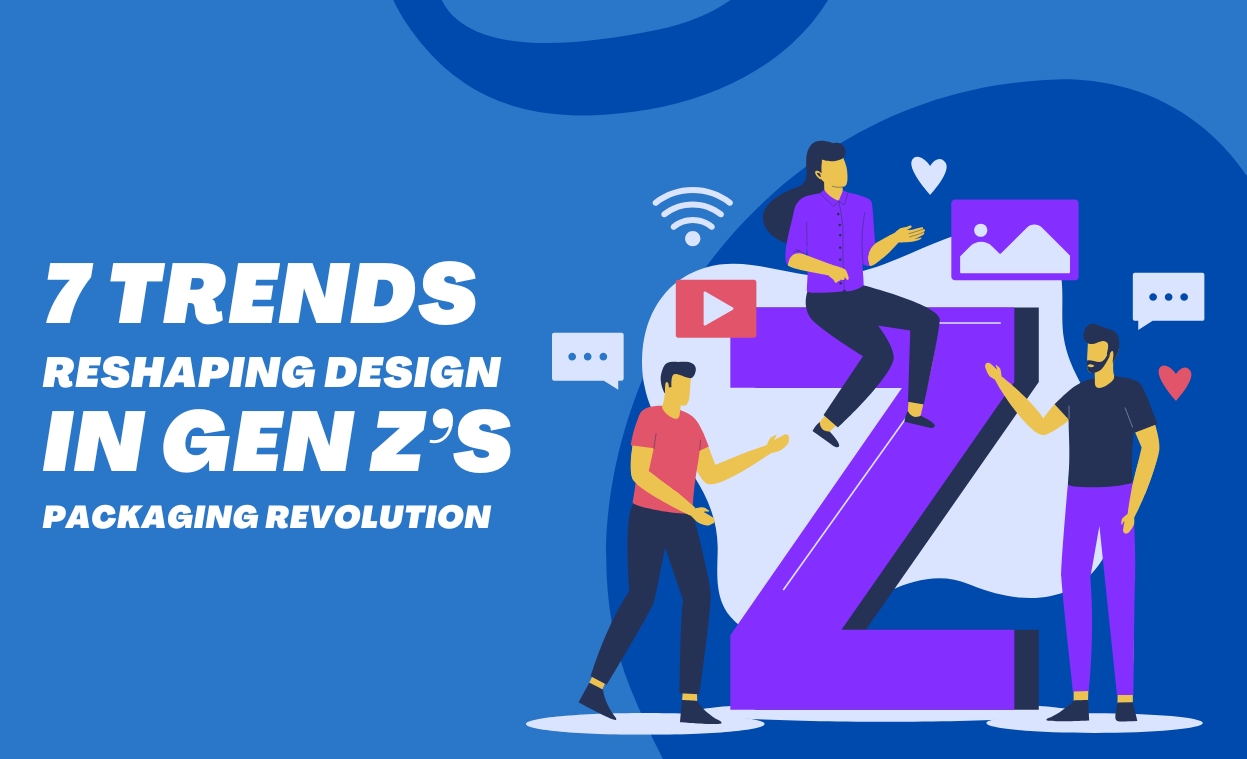Revenues in the US beauty sector are expected to reach $100.3 billion by 2024.1Born between the late 1990s and early 2010s, this generation – with a tremendous purchasing power of $360 billion – has become a major player in the beauty business even though they account for 20% of the US population. How has the younger generation acquired such an impact in the cosmetic industry? Thanks in great part to their multicultural background, Gen Z’s influence is more noticeable than that of Baby Boomers and Millennials. Nearly half of them come from a mixed background. Hence, they stress inclusiveness and actively support companies that give diversity priority.
1. Strong Minimalism
At the other extreme, the bold-minimal style gives Gen Z a break from information overload. Emphasising simple lines, strong typeface, and deliberate colour usage, this Packaging design eliminates unnecessary elements.
Bold-minimal packaging appeals to Gen Z’s respect for authenticity and mistrust of commercial hyperbole. Many times, these designs include sharp contrasts, with corporate logos or dazzling images secondary to product information. The end effect is honest and simple packaging that fits Gen Z’s values for openness.
With designs that often replicate the clean interfaces of their preferred applications, this style also appeals to the generation’s digital native state. Bold-minimal packaging’s simplicity makes it very shareable on social networking sites, where neat looks usually stick out in crowded feeds.

2. Distorted
Gen Z’s taste for subversion, independence, and innovation is reflected in distorted package design. These designs flirt with surrealism to provide a means of escape from reality in a world that is often chaotic and erratic.
Distorted packaging enables customers to enter a world where regular rules don’t apply, marked by unusual geometries, flowing typography, and features that appear to violate physical laws. Brands that question social conventions or serve Gen Z’s specialised groups will find great resonance in this look.
3. Indie
Gen Z’s DIY attitude and respect for authenticity and uniqueness are captured in package design by the indie trend. Though utilised by bigger companies, this design frequently seems purposefully handmade or small-batch.
Indie packaging often combines apparently random graphical components, a whimsical approach to design that seems natural and unique, with patterns. Although, at first look, these designs seem disorganised, Gen Z consumers will find great resonance in their young vitality.
Using sticker-like features, doodling, or collage-style compositions, brands embracing this trend frequently find inspiration using packaging as a canvas. Rather than mass-produced, these designs let Gen Z customers relate to items that seem distinctive and personal. For social media, it also looks great as it provides a lot of textures and features to provide visual appeal.
4. Freak
Packaging design’s freak trend questions accepted beauty standards and welcomes flaws. This approach flips conventional design guidelines, producing purposefully “ugly” or startling packaging. Freak packaging could include mismatched typography, clashing colours, purposefully amateur- looking images or odd placement of materials. It often uses sarcasm and comedy to parodies of too austere or pompous design standards.
Gen Z’s rejection of unattainable beauty standards and their respect for genuineness helps one to understand this trend. Like the stuff this generation produces and absorbs on social media, freak packaging is honest and sincere. Freak packaging provides a welcome dose of authenticity and self- acceptance for Gen Z customers looking for true relationships in a world of well-chosen perfection.
Packaging design reflects a trend in dermosonics cosmetics formulation. Inspired by Skintok and ideas from influencers—including dermatologists—today’s young generation understands that fresh skin calls for more than just simple upkeep. Advanced cosmetic procedures are offered to them; 15% of Gen Z have had a cosmetic operation, and 14% choose fillers or Botox. This knowledge also extends to post-care, guiding the dermo-cosmetic movement that stresses natural, scientifically supported components to improve young skin and preserve the effects of cosmetic treatments.
Precision applicators with metal tips, sophisticated dropper systems, and complex rotational designs—among other creative packaging solutions—are improving the application experience in cosmetics and skincare. These designs guarantee that users minimise bacterial contamination and cross-contamination while nonetheless dispensing the recommended dosage of substance. This emphasis on use and safety not only enhances the customer experience but also fits the desire for simple but powerful beauty products.

5. Sustainability Is Very Important In Helping Beauty Products To Be Appealing
Acknowledged as the environmentally concerned generation, Gen Z customers find inspiration in companies using sustainable methods. According to recent research, 66% of Gen Z and Millennial consumers are ready to pay extra for sustainable items, while over 60% of them have stopped buying from companies without environmental credentials. This emphasises the need for businesses to offer open credentials to inspire trust and validation among younger customers, therefore influencing their purchase decisions.
6. Follow New Trends Under The Direction Of A Reliable Beauty Friend
The customers, who are the actual trendsetters determining the direction of formulae and packaging, define the beauty business at its core. Beauty companies may create creative packaging that really appeals to customers by being aware of their tastes and wants. When companies pay attention to the voice of their customers and react to it, they not only position themselves to predict market trends but also to produce goods that inspire and involve, therefore fostering higher sales and enduring brand loyalty.
7. Neo-classic
Though young, Gen Z has exhibited an unexpected love for nostalgia, especially for times they never personally lived. Leveraging this feeling, the neo-vintage style in package design combines contemporary elements with old looks.
Conclusion
These seven Generation Z Packaging design highlight the mental health issues this generation faces, not just their visual tastes. Growing up in a world of digital strain and uncertainty, centennials search for packaging that offers emotional support and release. From colours enhancing mood to patterns supporting self-acceptance, every trend meets certain psychological demands. For brands, knowing these linkages is very vital. Effective packaging for Generation Z has to enhance mental health and build closer relationships with this powerful group beyond mere aesthetics.
